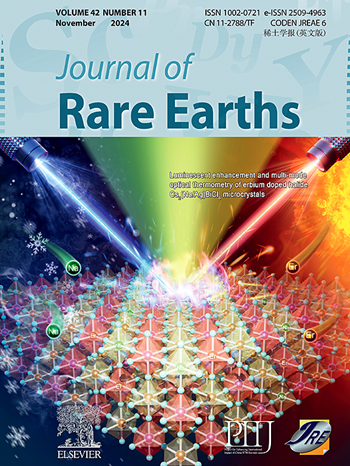In-situ synthesis of Z-scheme CeO2@WO3 heterojunction with aromatic rings as electron medium for efficient photocatalytic degradation of perfluorobutane sulfonate
IF 5.2
1区 化学
Q1 CHEMISTRY, APPLIED
引用次数: 0
Abstract
Photocatalytic technology has been proven to be a simple and effective method for degrading recalcitrant organic pollutants. In this study, a series of Z-scheme heterojunction nanocomposites composed of CeO2 and terephthalic acid-modified WO3 was prepared and further used as photocatalysts for perfluorobutane sulfonate (PFBS) degradation. In this design, terephthalic acid was used as an electron recombination center and heterojunction mediator, which effectively enhances the migration ability of electron–hole pairs and the physicochemical stability of the catalyst. In addition, in situ synthesis of CeO2 onto the WO3 surface by the coordinate bond between terephthalic acid and Ce ions can avoid CeO2 agglomeration. As a result, the CeO2@WO3 photocatalyst exhibits excellent PFBS degradation ability (94% for CeO2@WO3 vs. 19% for CeO2). After the fifth cyclic degradation experiment, the CeO2@WO3 photocatalyst still maintains stable degradation efficiency. Furthermore, the reaction mechanism of the PFBS in CeO2@WO3 photocatalytic process was analyzed by free radical trapping experiment and liquid chromatography tandem mass spectrometry (LC-MS) technique. This study provides new insights for constructing Z-scheme heterojunction and demonstrates that CeO2@WO3 photocatalysts possess a promising prospect for degrading PFBS pollutants.

以芳香环为电子媒介原位合成 Z 型 CeO2@WO3 异质结,用于高效光催化降解全氟丁烷磺酸盐
光催化技术已被证明是一种简单有效的降解难降解性有机污染物的方法。在本研究中,制备了一系列由CeO2和对苯二甲酸修饰的WO3组成的Z-scheme异质结纳米复合材料,并将其用作全氟丁烷磺酸(PFBS)降解的光催化剂。本设计采用对苯二甲酸作为电子复合中心和异质结介质,有效提高了电子-空穴对的迁移能力和催化剂的理化稳定性。此外,利用对苯二甲酸与Ce离子之间的配位键在WO3表面上原位合成CeO2可以避免CeO2团聚。结果,CeO2@WO3光催化剂表现出优异的PFBS降解能力(CeO2@WO3 94%, CeO2 19%)。经过第五次循环降解实验,CeO2@WO3光催化剂仍保持稳定的降解效率。通过自由基捕获实验和液相色谱串联质谱(LC-MS)技术分析了PFBS在CeO2@WO3光催化过程中的反应机理。该研究为构建z型异质结提供了新的见解,并证明CeO2@WO3光催化剂在降解PFBS污染物方面具有良好的前景。
本文章由计算机程序翻译,如有差异,请以英文原文为准。
求助全文
约1分钟内获得全文
求助全文
来源期刊

Journal of Rare Earths
化学-应用化学
CiteScore
8.70
自引率
14.30%
发文量
374
审稿时长
1.7 months
期刊介绍:
The Journal of Rare Earths reports studies on the 17 rare earth elements. It is a unique English-language learned journal that publishes works on various aspects of basic theory and applied science in the field of rare earths (RE). The journal accepts original high-quality original research papers and review articles with inventive content, and complete experimental data. It represents high academic standards and new progress in the RE field. Due to the advantage of abundant RE resources of China, the research on RE develops very actively, and papers on the latest progress in this field emerge every year. It is not only an important resource in which technicians publish and obtain their latest research results on RE, but also an important way of reflecting the updated progress in RE research field.
The Journal of Rare Earths covers all research and application of RE rare earths including spectroscopy, luminescence and phosphors, rare earth catalysis, magnetism and magnetic materials, advanced rare earth materials, RE chemistry & hydrometallurgy, RE metallography & pyrometallurgy, RE new materials, RE solid state physics & solid state chemistry, rare earth applications, RE analysis & test, RE geology & ore dressing, etc.
文献相关原料
公司名称
产品信息
阿拉丁
Benzoquinone
阿拉丁
isopropanol
阿拉丁
furfuryl alcohol
 求助内容:
求助内容: 应助结果提醒方式:
应助结果提醒方式:


